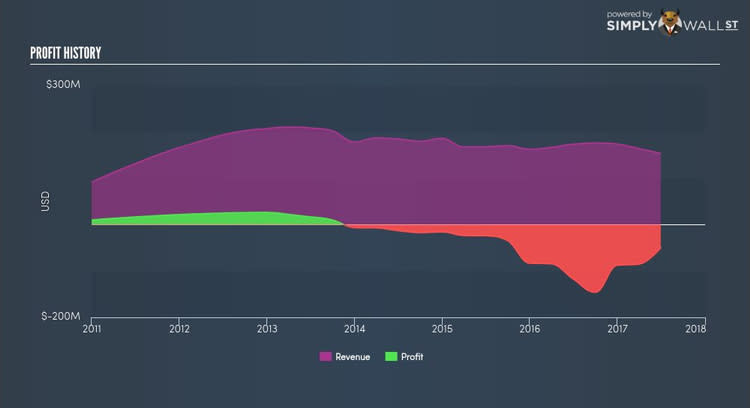Should You Be Concerned About Turtle Beach Corporation’s (HEAR) Risks?

If you are looking to invest in Turtle Beach Corporation’s (NASDAQ:HEAR), or currently own the stock, then you need to understand its beta in order to understand how it can affect the risk of your portfolio. Every stock in the market is exposed to market risk, which arises from macroeconomic factors such as economic growth and geo-political tussles just to name a few. This is measured by its beta. Not every stock is exposed to the same level of market risk, and the market as a whole represents a beta of one. A stock with a beta greater than one is expected to exhibit higher volatility resulting from market-wide shocks compared to one with a beta below one.
View our latest analysis for Turtle Beach
An interpretation of HEAR's beta
With a five-year beta of 0.54, Turtle Beach appears to be a less volatile company compared to the rest of the market. This means that the change in HEAR's value, whether it goes up or down, will be of a smaller degree than the change in value of the entire stock market index. HEAR’s beta indicates it is a stock that investors may find valuable if they want to reduce the overall market risk exposure of their stock portfolio.
Does HEAR's size and industry impact the expected beta?
HEAR, with its market capitalisation of USD $44.45M, is a small-cap stock, which generally have higher beta than similar companies of larger size. Moreover, HEAR’s industry, household durables, is considered to be cyclical, which means it is more volatile than the market over the economic cycle. As a result, we should expect a high beta for the small-cap HEAR but a low beta for the household durables industry. This is an interesting conclusion, since both HEAR’s size and industry indicates the stock should have a higher beta than it currently has. A potential driver of this variance can be a fundamental factor, which we will take a look at next.
Can HEAR's asset-composition point to a higher beta?
During times of economic downturn, low demand may cause companies to readjust production of their goods and services. It is more difficult for companies to lower their cost, if the majority of these costs are generated by fixed assets. Therefore, this is a type of risk which is associated with higher beta. I examine HEAR’s ratio of fixed assets to total assets to see whether the company is highly exposed to the risk of this type of constraint. With a fixed-assets-to-total-assets ratio of greater than 30%, HEAR appears to be a company that invests a large amount of capital in assets that are hard to scale down on short-notice. As a result, this aspect of HEAR indicates a higher beta than a similar size company with a lower portion of fixed assets on their balance sheet. However, this is the opposite to what HEAR’s actual beta value suggests, which is lower stock volatility relative to the market.
What this means for you:
Are you a shareholder? HEAR may be a worthwhile stock to hold onto in order to cushion the impact of a downturn. Depending on the composition of your portfolio, low-beta stocks such as HEAR is valuable to lower your risk of market exposure, in particular, during times of economic decline.
Are you a potential investor? Before you buy HEAR, you should look at the stock in conjunction with their current portfolio holdings. HEAR may be a great cushion during times of economic downturns due to its low beta. However, its high fixed cost may mean margins are squeezed if demand is low. I recommend taking into account its fundamentals as well before leaping into the investment.
Beta is one aspect of your portfolio construction to consider when holding or entering into a stock. But it is certainly not the only factor. Take a look at our most recent infographic report on Turtle Beach for a more in-depth analysis of the stock to help you make a well-informed investment decision. But if you are not interested in Turtle Beach anymore, you can use our free platform to see my list of over 50 other stocks with a high growth potential.
To help readers see pass the short term volatility of the financial market, we aim to bring you a long-term focused research analysis purely driven by fundamental data. Note that our analysis does not factor in the latest price sensitive company announcements.
The author is an independent contributor and at the time of publication had no position in the stocks mentioned.

